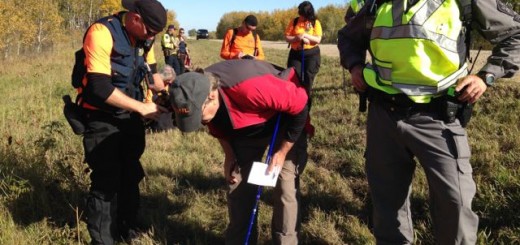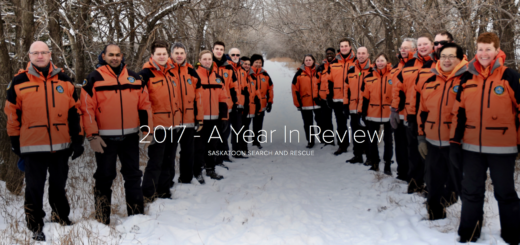Search is an Emergency
Written by Dale Liebrecht, SSAR Training Director
With every moment that elapses, a search area gets exponentially larger. Our subject may be in distress and the minutes that expire are crucial to the mission. Saskatoon Search And Rescue has enormous technical capacity, but it is deployed at the expense of time. Our team will quickly and carefully decide which technical and non-technical assets to deploy. Once the decision is made, we respond safely with both speed and accuracy. Our last training days have focused on improving the process of setting up our command post and logistics/communications trailer. We made significant improvements by being effective while working on parallel tasks. Complete deployment of all assets with functional capability has been reduced to just over nine minutes with fully trained members. A few examples of what we need to concern ourselves with include but are not limited to: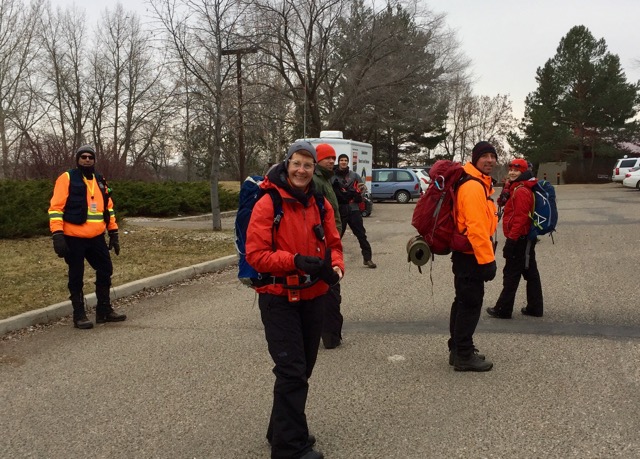
- Communications during early deployment (with agency of jurisdiction and our own assets)
- Rally point – street location, UTM coordinates, Decimal Degrees, NAD? – dependent on agency
- Do we send recon / hasty team members in advance of the main body
- ICS (Incident Command Systems) considerations
- Logistics considerations
- Ongoing and consistent documentation from each member
- Trailers – unhitch and stabilize
- Laptop – KAS-10 GPS – current position tracked in real time
- Laptop – OZI Explorer – historical analysis of evidence; precise team positions/trail logged via GPS over mission duration.
- Laptop – for planning and backup system
- Multiple mast systems
- Generator deployment – connect to service (breaker box) in trailer
- SSAR radio deployment and test
- PPSTN network deployment and test
- Air band radio testing
- Distribution of near water strike gear (if necessary)
- Prepare individual gear based on task and mission – medical, survival, extrication, food, shelter, wildlife safety, etc.
- GPS device deployment
- Sign in – tracking our own personnel
- Sign out sheets – equipment
- Operational briefing
- Safety briefing
- Communications with agency of jurisdiction
- Air asset coordination
- ONGOING EVALUATION OF PLAN – ADAPT TO CIRCUMSTANCE
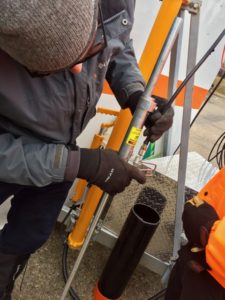 In training, one of the primary objectives is for each team member to get comfortable with what they are least comfortable doing. This goes against our human nature but is a training requirement to elevate the team.
In training, one of the primary objectives is for each team member to get comfortable with what they are least comfortable doing. This goes against our human nature but is a training requirement to elevate the team.
Saskatoon Search And Rescue is special for many reasons.
1. Our team is okay with occasional failure; or as I like to think of it – deferred learning.
2. We accept this failure, take responsibility for it and make necessary adjustments.
3. We are constantly critical of ourselves and other team members with the goal of making us all better.
4. There are not a lot of large egos within our group.
5. We have many leaders who respect others who openly challenge their views and they listen to new ideas.
6. Our members take personal responsibility for ourselves, our team and our community.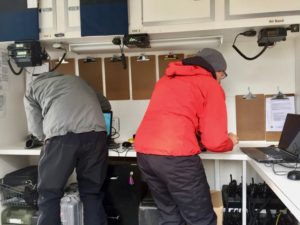
We collectively spend substantial unglorified hours quietly optimizing our level of operational readiness, community prevention advocacy and inter-agency relationship development amongst many other things. Like many SAR field activities, these are sometimes lonely, difficult tasks which get little recognition. This is part of the SAR experience.
The core of our team, no matter how they feel, will always get up, dress up, show up and, most importantly, never give up. That is who we are.
